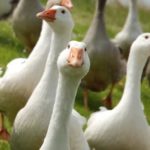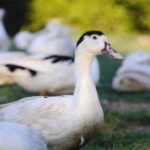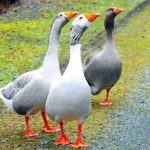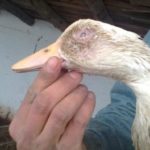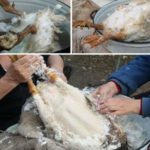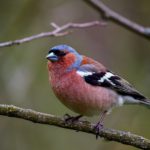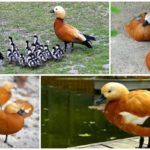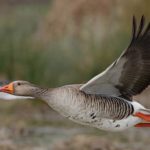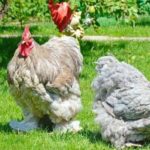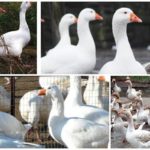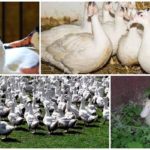Waterfowl have long lived alongside humans. Geese and ducks bring fluff and tasty meat to the owner, reproduce successfully and are considered unpretentious species. Despite their common features, these birds are completely different. It is important for a farmer to know the difference between a domestic duck and a goose and to be able to identify them in any form. It is worth studying the characteristics of each species and understanding which bird ultimately deserves more attention.
Description of the goose
Adult birds are very easy to distinguish from each other. The goose is much larger than its companion and reaches a weight of 4.5 kg. He is taller and taller, males grow up to 90 cm.The wingspan exceeds 170 cm. The body length sometimes reaches a meter. The long neck gives the bird a noble appearance, but prevents it from fully diving. In addition, geese walk holding their bodies straighter, their steps are wider and more impressive, but firmer than those of a duck. Strong paws are located in the center of the body. The spurs are small, the fingers are also short, framed by dense membranes. The bird has excellent stability and can run and swim quickly. Pronounced sexual dimorphism.
The beak and paws are bright orange. Over time, ganders develop a leathery-bone tubercle on their beak. Sharp serrations along the edges of the beak allow the bird to easily uproot grass and find food in the water.
These birds live in separate families: gander, goose and grown offspring. Geese can hardly be called quiet; they love to make noise. The characteristic cackle of birds is difficult to confuse with something else. And to protect themselves from danger, they hiss, although they can even rush at the enemy.
Duck appearance
Ducks are almost 2 times smaller in size than their feathered counterparts. The weight of hybrids - mulardas, Peking - does not exceed 3.5 kg, and the weight of wild individuals barely reaches 2 kg. The body length of domestic individuals often remains at around 50 cm.
Ducks' webbed feet are located at the back of the body. They are short and clumsy, better suited for swimming rather than walking. The bird's steps look awkward, it rolls from side to side, and with sudden acceleration it can fall onto its chest. The legs and beak, regardless of color, are always yellow or orange.
The duck's neck is short, and its body is designed so that the bird can easily dive at an angle of 90 degrees. Color varies.Drakes are more colorfully feathered on the wings and neck. Females are colored brown, brown, white, and gray. Birds make a variety of sounds, from quacks to clicking and cackling sounds.
What is the difference between a duck and a goose
Despite their external similarity, in fact, these birds have quite a lot of differences:
- The beak of geese is pointed, while that of ducks is flat and wide.
- Geese are more adapted to flying, ducks - to swimming.
- Geese cackle, ducks prefer to quack.
- The diet of birds is also different: geese are not averse to snacking on cereals, seeds, fruits and berries, herbs and insects. Ducks consume mainly grain, aquatic plants and aquatic animals: small fish, swimming beetles, tadpoles.
- Geese are cleaner.
- The gander and the goose raise their offspring together and form a stable pair for several years. The female lays up to 12 eggs. Both parents train the young, the male takes care of his girlfriend during incubation. Ducks stay together for only one season. The drake is not interested in the brood after hatching.
How to distinguish birds on the counter
Some farmers and housewives are confused when buying poultry at the market. What is better, tastier, healthier and more profitable to buy - a goose or a duck? Duck meat is firm and dense, dark red in color, has a faint sweetish odor, and is rich in B vitamins and Omega-3 acids. The only negative is the high percentage of fat. To reduce its amount, when cooking, the duck is stuffed with prunes or vegetables.
The duck carcass expands towards the bottom, is slightly flattened in the back, the wings and neck have no pronounced length, the skin has a yellowish tint, and is thin. Paws point back. A young duck's fat is white, while an old duck's is yellow. The most healthy and delicious individuals are between 6 and 12 months old.They are easy to identify not only by the color of their fat, but also by their soft legs without engorgement, and a light and clean beak.
Goose meat is sweetish, tart, dark in color. Rich in minerals and amino acids. Helps raise hemoglobin levels, indicated for anemia. It also helps with the functioning of the stomach and prevents the formation of cancer.
A goose is larger than a duck, its body is oblong. The neck is long, and the vertebrae on it are larger. The legs and wings are large relative to the size of the body. There is a specific meaty smell. The skin is thick, dense, elastic, pink or yellowish in color, rough to the touch. Paws stick up or slightly to the sides. The larger the carcass, the better. The meat of sexually mature individuals is tastier; that of young animals is tough and dry. In old birds, the fat is cloudy and streaked with blood.
Geese are less popular among farmers due to the high cost of keeping them. Therefore, their meat costs an order of magnitude more. If you look at the inside of gutted carcasses, the duck will have more bones, and the goose will have more fat.


